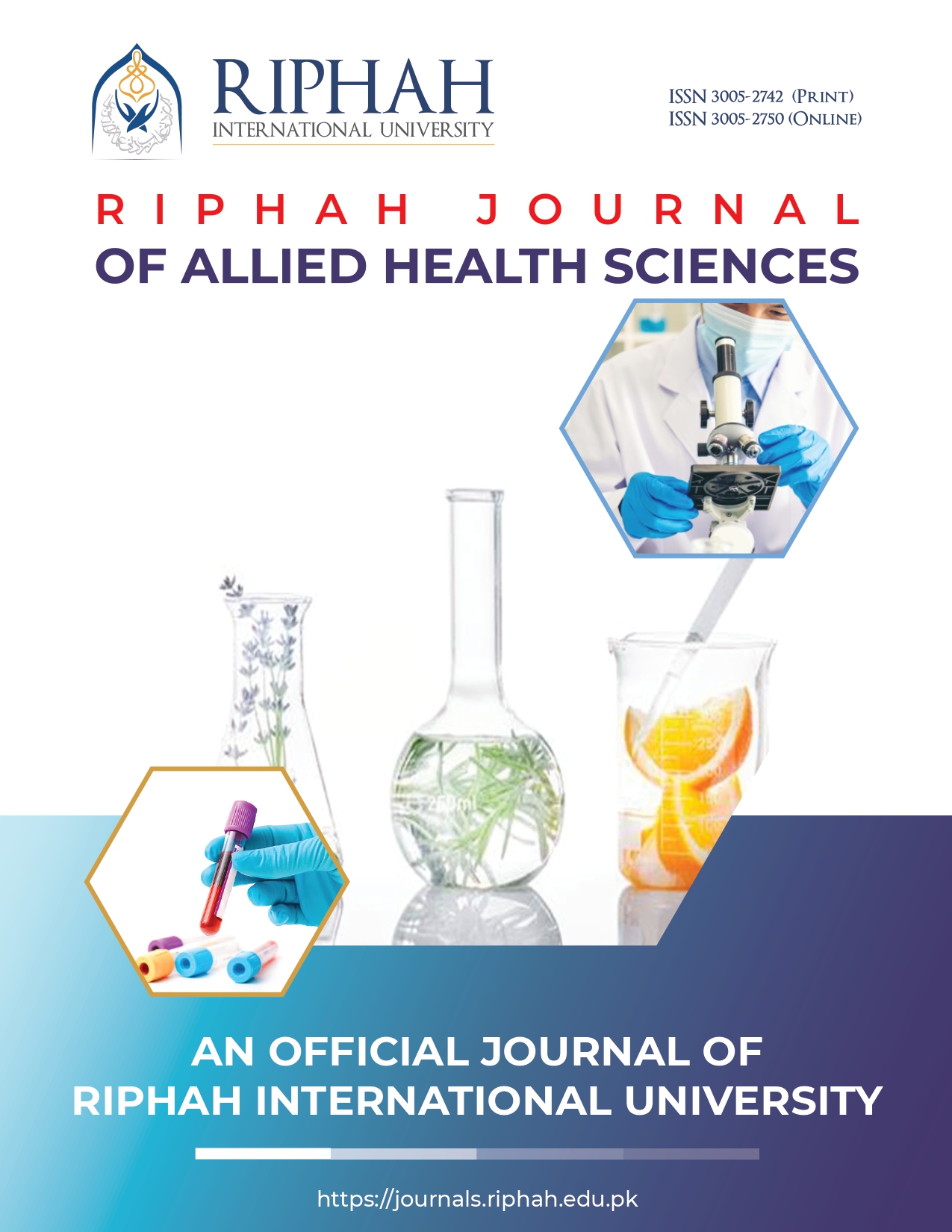Gender as Risk Factor for Thyroid Dysfunction in Patients with Type-II Diabetes Mellitus; A Retrospective Analysis in a Cohort Located at Lahore, Punjab, Pakistan
Keywords:
Diabetes mellitus, endocrine disorder, Thyroid dysfunction, HBA1C, HyperglycaemiaAbstract
Introduction: Type II diabetes mellitus (DM) is the most common endocrine disorder. It has been reported that type II DM has been associated with thyroid dysfunction that make difficult in maintain metabolic homeostasis later in life. Methodology: Total 300 study participants were included in this retrospective study. The individuals were investigated for blood sugar fasting (BSF), HBA1C performed on automated analyser Architect CI 8200 and thyroid stimulating hormone (TSH), freeT4, T3 on automated immunoassay analyser Cobas-e411. Results: One fifty-two (50.67%) out of total 300 were diagnosed with diabetes and 148 (49.34%) were grouped as non-diabetic. Total 101 out of 152 diabetic patients were females among them 14 (13.86%) were observed with hypothyroidism and 14 (13.86%) with hyperthyroidism (p-value 0.000). No significant results were observed in the male group.
Conclusion: Thyroid dysfunction is observed more significantly in females’ diabetic patients. Thyroid hormone imbalance occurs considerably among diabetic females that make difficult to maintain the glucose level. Diabetic patients must be regularly evaluated for thyroid profile on regular intervals. Managing both of these endocrinal disorders will increase the efficiency of diabetic treatment and may decrease in the morbidity rate.


